Get ready to fall in love after reading this awesome guide to Kansai, Japan. One of the country’s eight regions, Kansai (or Kinki as some people call it) is up there with our favorites. It has so many different and unique city destinations to explore, as well as nature spots that few people know about.
It’s a great destination no matter the season, and you can easily pick and choose destinations depending on how much time you have for your trip. From breathtaking hot springs overlooking the sea to lively city neighborhoods that never sleep, the Kansai region is a world of contrasts that will keep you on your toes!
What You’ll Get Out Of This Article
This awesome Kansai guide will help you get your bearings and figure out what parts of the area you want to see on your next trip. It also includes:
- A breakdown of all the best things to do in Kansai’s most famous cities – the city of Kyoto, Osaka, and Nara. As well as the epic Nishiki Market, which will get foodies excited!
- Awesome temples that you can’t miss like the Shitenno-ji Temple in Osaka and the picturesque Yasaka Pagoda in Kyoto.
- A guide to electric neighborhoods like Dotonbori where you’ll be immersed in Japan’s crazy neon-lit streets and lively bars.
- Information about a trip to Universal Studios Osaka, including the best rides that you can’t skip and where to eat the coolest themed food.
- Off-the-beaten-track destinations that not many travelers know about, like Lake Biwa and Nachi Waterfall.
- Tips and tricks, including hotel recommendations, we’ve done the legwork! Plus loads of helpful information about the Kansai region, like what not to miss if you’re short on time, when to visit, and how to get around.
The Ultimate Guide To The Kansai Region
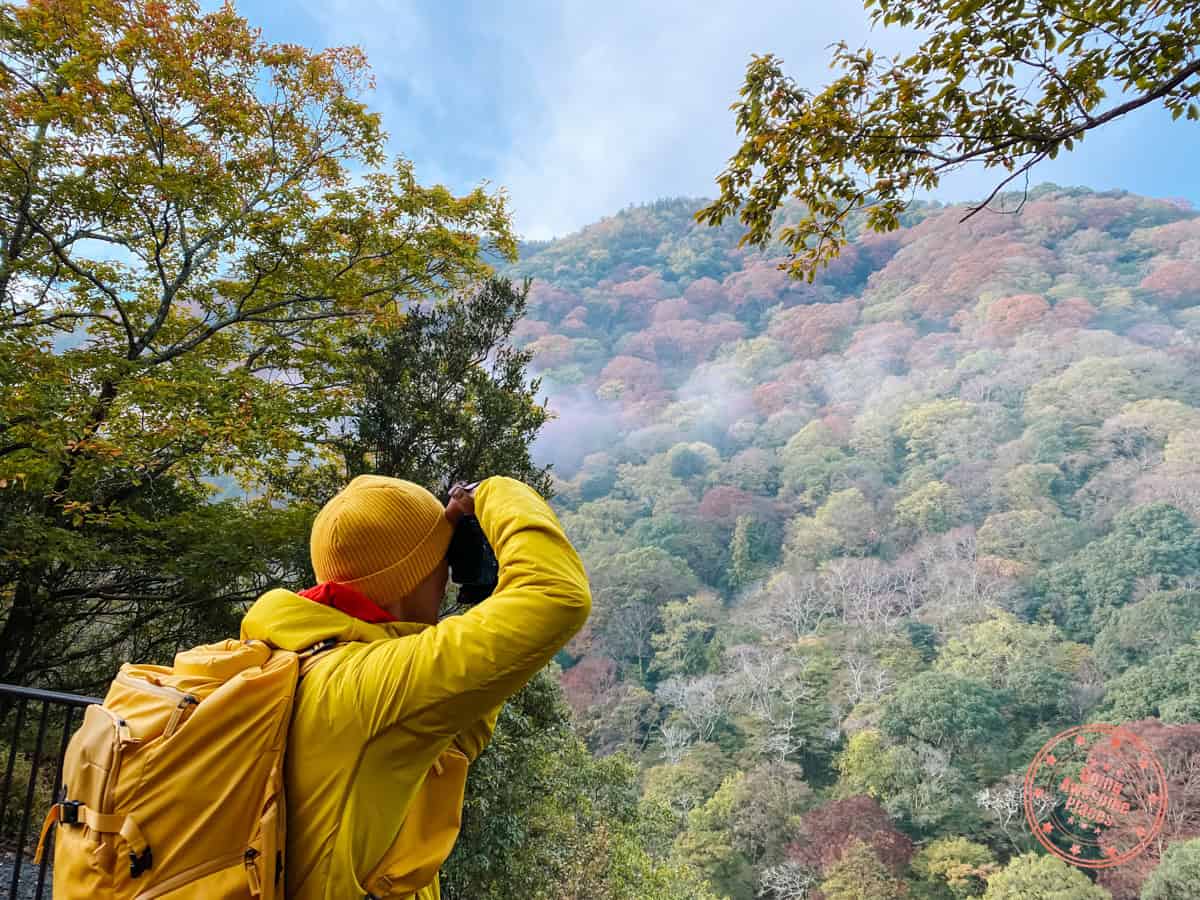
Get ready to be blown away by how much there is to do in Kansai – let’s dive right in!
TOP TIPS FOR TRAVELING TO THE KANSAI REGION
- Where to stay: The Deer Park Inn is inside the Nara Deer Park! Watch them roaming around the park from your bedroom window and fall in love with these adorable animals. We use Booking.com for all of our stays and use the Genius discount to get great deals on our hotel bookings. Alternatively, you can always see if hotel corporate codes might work for you.
- Must pack item: Bring your best camera so you can capture photos of all the unforgettable places you visit in Kansai!
- Recommended tour: Book this traditional tea ceremony in Kyoto. We absolutely loved putting kimonos on and learning about this age-old tradition.
- Car rentals – Because there are such great transport links around Kansai, you most likely won’t need a car for this trip. But if you want to visit some of the more remote destinations in this guide then make sure you know about ways to save money with car rental coupon codes and always start your search with Discover Cars and RentalCars so you know what the best deals are.
- Flights – If you are flying in from elsewhere, use the Skyscanner “Everywhere” feature to find the best deals from your local airport. Check how much it would be for you to get to Kansai International Airport!
- Insurance – Not always required but always recommended! Make sure you’re covered with the best travel insurance. Our go-to is always HeyMondo for great coverage at a fair price, also with our link you automatically get 15% off
- Hottest deals – Never be without our frequently updated travel deals page.
From the gorgeous onsens with views of the Pacific to the neon-lit neighborhoods of Osaka, the Kansai region has something for everyone!
Why The Kansai Region Is Worth Visiting
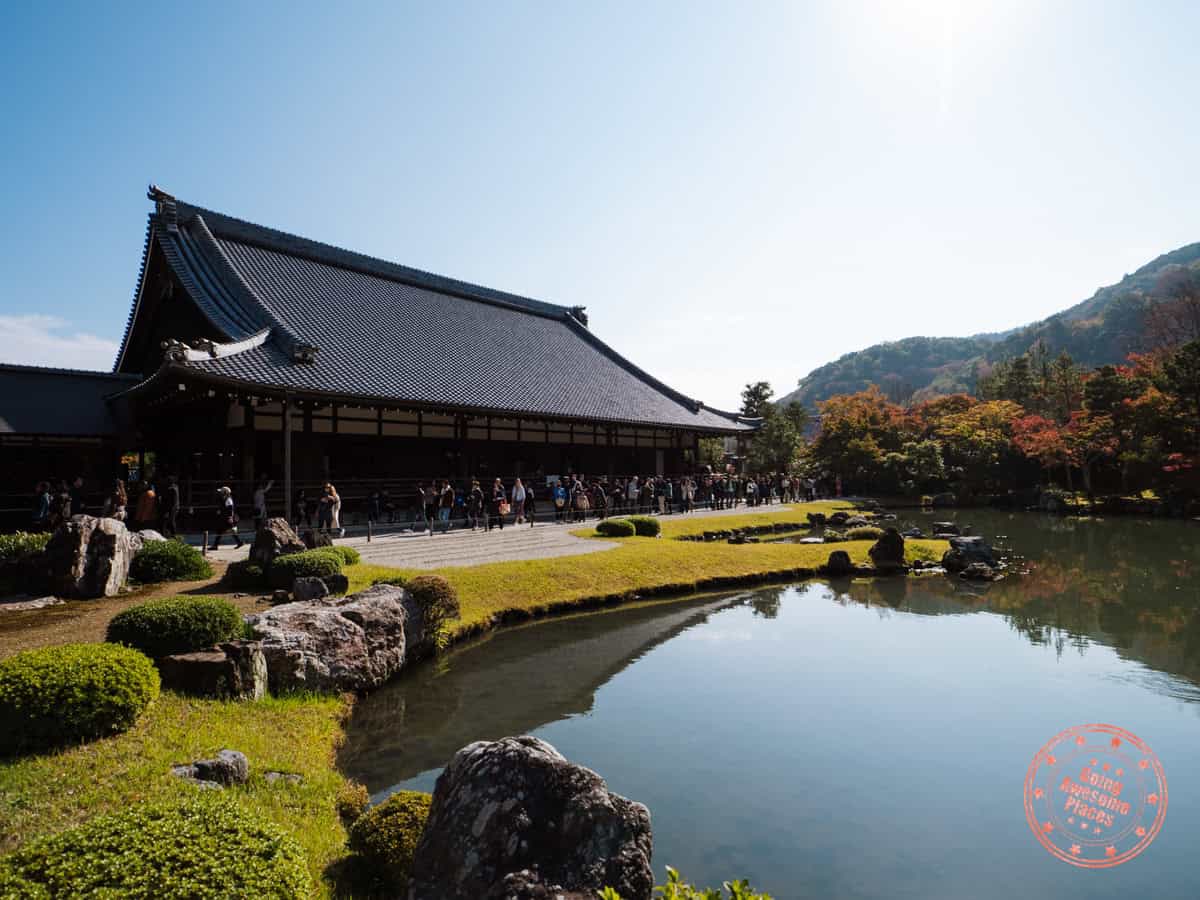
Kansai, also known as Kinki, is a region in Honshu. It’s located in the southern-central part of Japan’s main island and encompasses seven different prefectures – Kyoto, Osaka, Hyogo, Nara, Wakayama, Mie, and Shiga.
It’s one of our favorite regions of Japan because it’s home to Kyoto and Osaka, two very different cities that offer a glimpse into Japan’s ancient past and the more modern, futuristic vibe. You can bounce between them in no time, which we loved!
If you’ve got a while to spend in Kansai, then you should also explore the lush hot springs in Wakayama, stroll the shores of Lake Biwa, and visit the country’s tallest single-tier waterfall.
Get ready to discover all the awesome and unique things you can do in the Kansai region – let’s jump right in!
Notable Hotels In Kansai
We found the best hotels in each of Kansai’s three major cities, Osaka, Nara, and Kyoto as well as some cool accommodation options further afield that are near some of the region’s less popular (but still awesome!) attractions.
BUDGET

Hotel Monterey Grasmere
We love this hotel because of its super handy location. It’s right by Osaka’s Namba Station and a 10-minute walk from Dotonbori. We also thought the intentionally old-fashioned decor was super cute and loved how big the rooms were compared to the shoe-box-sized hotel rooms you usually get in Japan.
MID-RANGE

Matsubaya Ryokan
We thought it was important to include a budget-friendly option in Kyoto for any backpackers traveling on pennies. It’s not everyone’s idea of fun, but we actually loved sleeping on the futon-on-tatami mats! The ryokan is also a 15-minute walk from Kyoto Station, which is a major plus and makes it super easy to get around the city.
GUEST HOUSE

The Deer Park Inn
If you’ve fallen in love with the bowing deer at the Nara Deer Park and you’re not ready to leave yet, book a night’s stay at this guesthouse in the park. It was so cool watching the deer roaming from our bedroom window and having a kitchen we could cook in was handy too.
MID-RANGE

Yunominesou
If you’re in need of pampering, then stay at this gorgeous onsen hotel in the Wakayama Prefecture. It’s got a two-person onsen you can book exclusively for you and your partner, and it is surrounded by lush forest. The views from our bedroom window were enough to make us never want to leave!
CHECK OUT THIS ARTICLE
Where To Stay In Kyoto, Japan – A Guide To The Best Hotels, Ryokans, And Neighborhoods
Top Things To See In Kansai’s Major Cities

There’s a lot to do and see in the Kansai region, so we’ve divided this part of the article into handy sections that will help you get your bearings. Hopefully, that will make this guide easier to follow and help you plan what you want to see better.
With three of Japan’s major cities in its confines, Kansai is a great place to visit if you’re looking for a city break. We are, of course talking about Osaka, Kyoto, and Nara. Because there are so many awesome attractions and things to do in each, we think each one deserves its own section (and guides – which we have already written and will link throughout!).
But there’s more to the Kansai region than just its most popular cities, so we’ve also come up with another section packed with lesser-known cities and nature spots you should add to your Kansai itinerary!
Osaka: Visit Japan’s Futuristic Neighborhoods And Temples
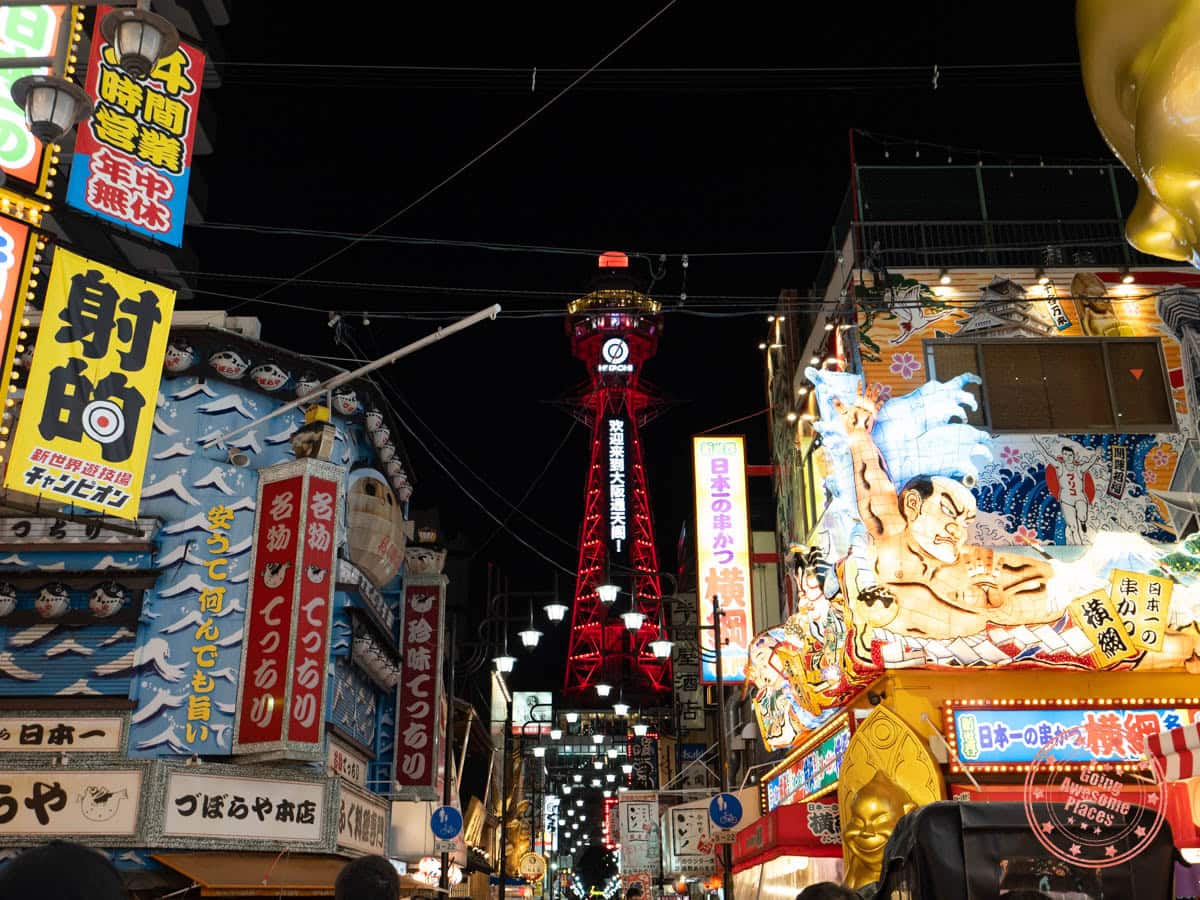
There’s more to do in Osaka than we could possibly fit in this chunk of text, which is why we wrote an entire guide – The Ultimate Osaka 4 Day Itinerary. If you’re inspired by the attractions below and you want to know more about Osaka, you should go check it out!
We love Osaka because it has a bit of everything. It feels like a melting pot of Japan’s modern, electric streets, but still has a lot of its historical charm and loads of examples of ancient temples. You can be walking through a maze of neon billboards one minute and standing by one of Japan’s oldest temples the next. This is why we keep coming back to this awesome city in Kansai.
Shitenno-ji Temple
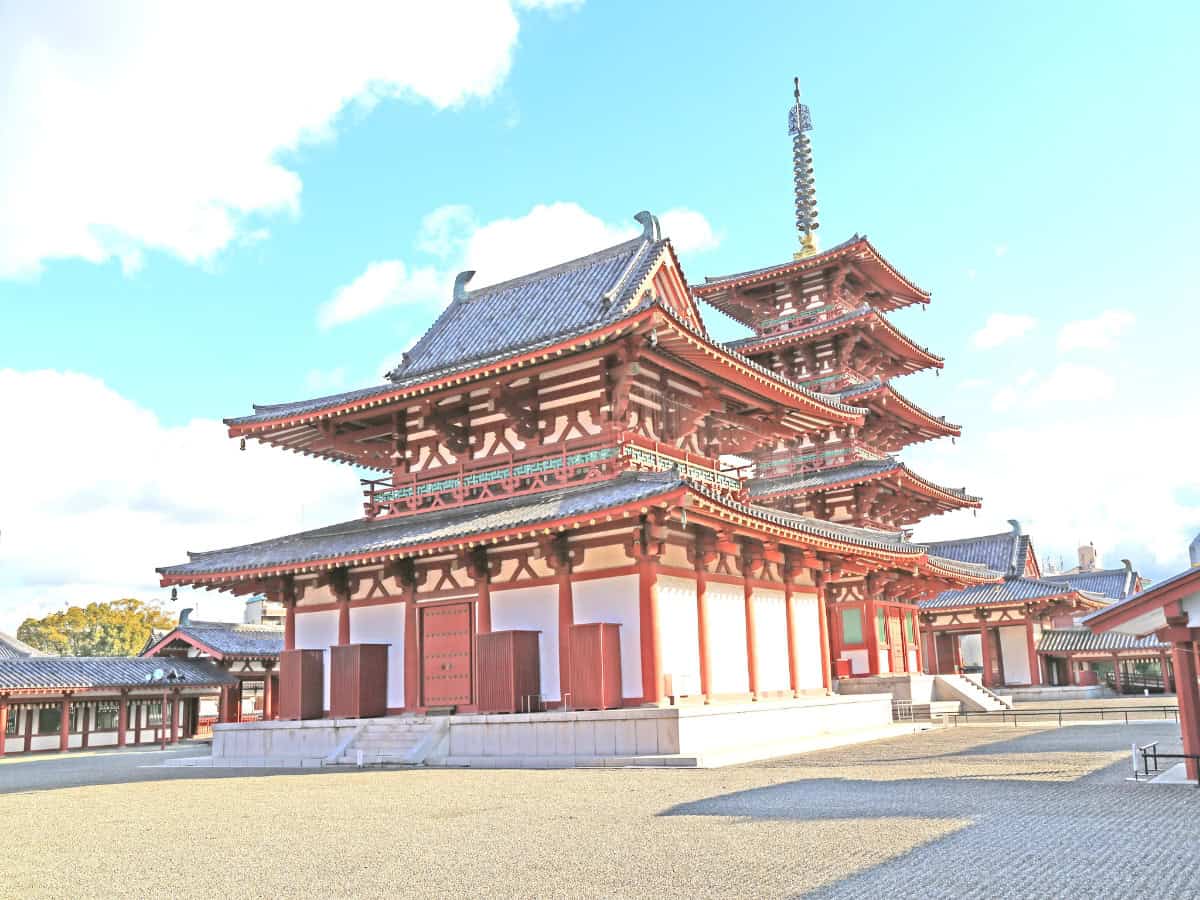
Shitenno-ji Temple is one of the oldest temples in Japan, founded back in 593 by Prince Shotoku Shitenno-ji. At the time, Buddhism hadn’t picked up in Japan, and the temple was part of the prince’s attempt to introduce the religion into the country.
We love it because it’s such a great example of a traditional Japanese temple. The facade is intricately decorated in carvings, and there’s a giant, five-storey high pagoda next to the main temple complex.
But we didn’t just come for the temple, we were also at Shitenno-ji because we wanted to stroll through the surrounding temple grounds and escape the hustle and bustle of the city for a little while. The Gokuraku-jodo Gardens are our favorite!
Wander Through The Electric Sreets Of Dotonbori
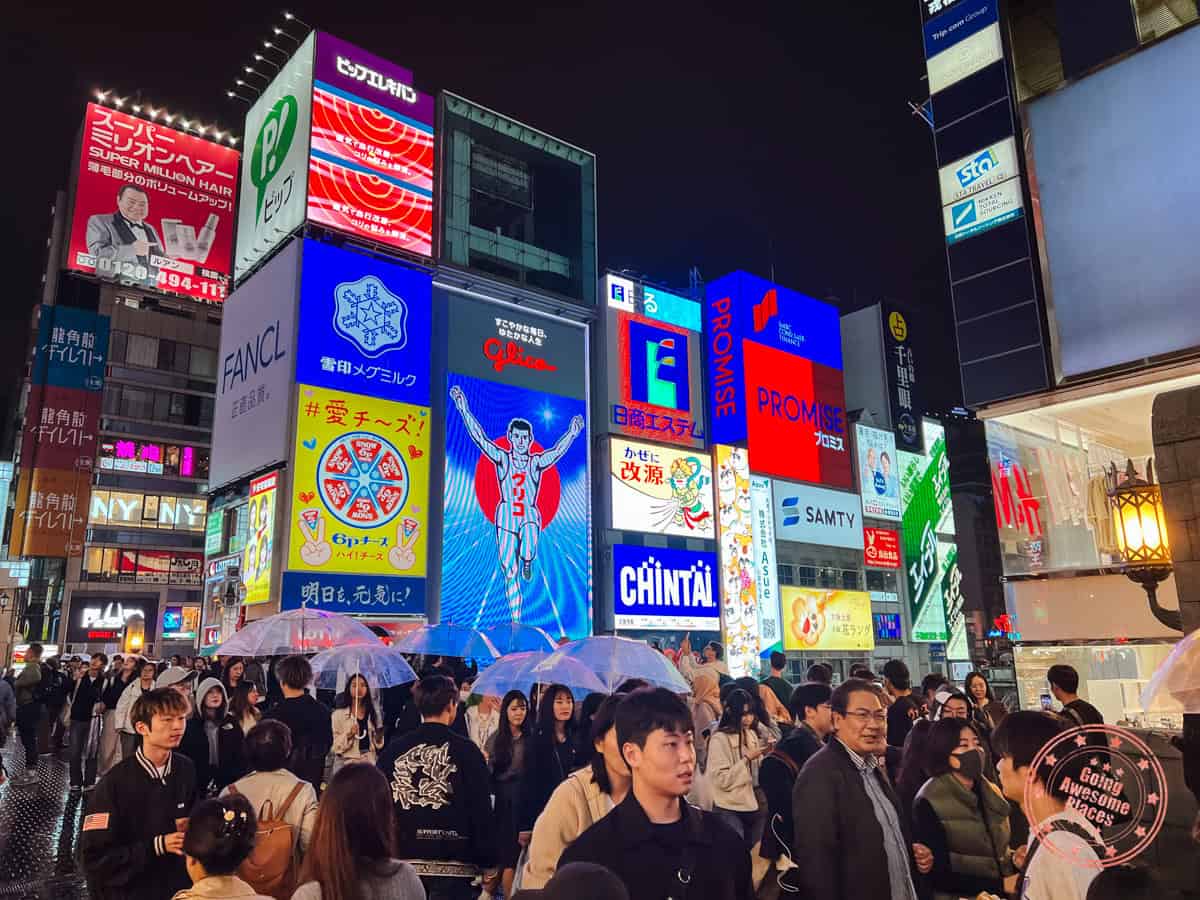
One thing that always surprises me about Dotonbori is the neighborhood’s humble beginnings. You wouldn’t guess so now, but the area’s history dates back to the 1600s during the Edo Period when it was a small entertainment district with not much more than a few puppet theaters.
Fast forward to the present, and it’s amongst Osaka’s liveliest neighborhoods. Boasting the most dazzling neon billboards and the flashiest streets, it blows us away every time we’re there.
We also love that it’s built along the Umezu River because that means you can explore it from the water on board a Tonbori River Cruise! We recommend opting for a more intimate tour than the generic yellow water cruisers (check one tour option out here).
You can’t leave Dotonbori without taking a selfie with the famous Glico Man billboard from the Ebisubashi Bridge. Incredibly, the sign has been there since 1935 and has become Osaka’s unofficial mascot.
Tap Into Your Inner Child At Universal Studios Osaka
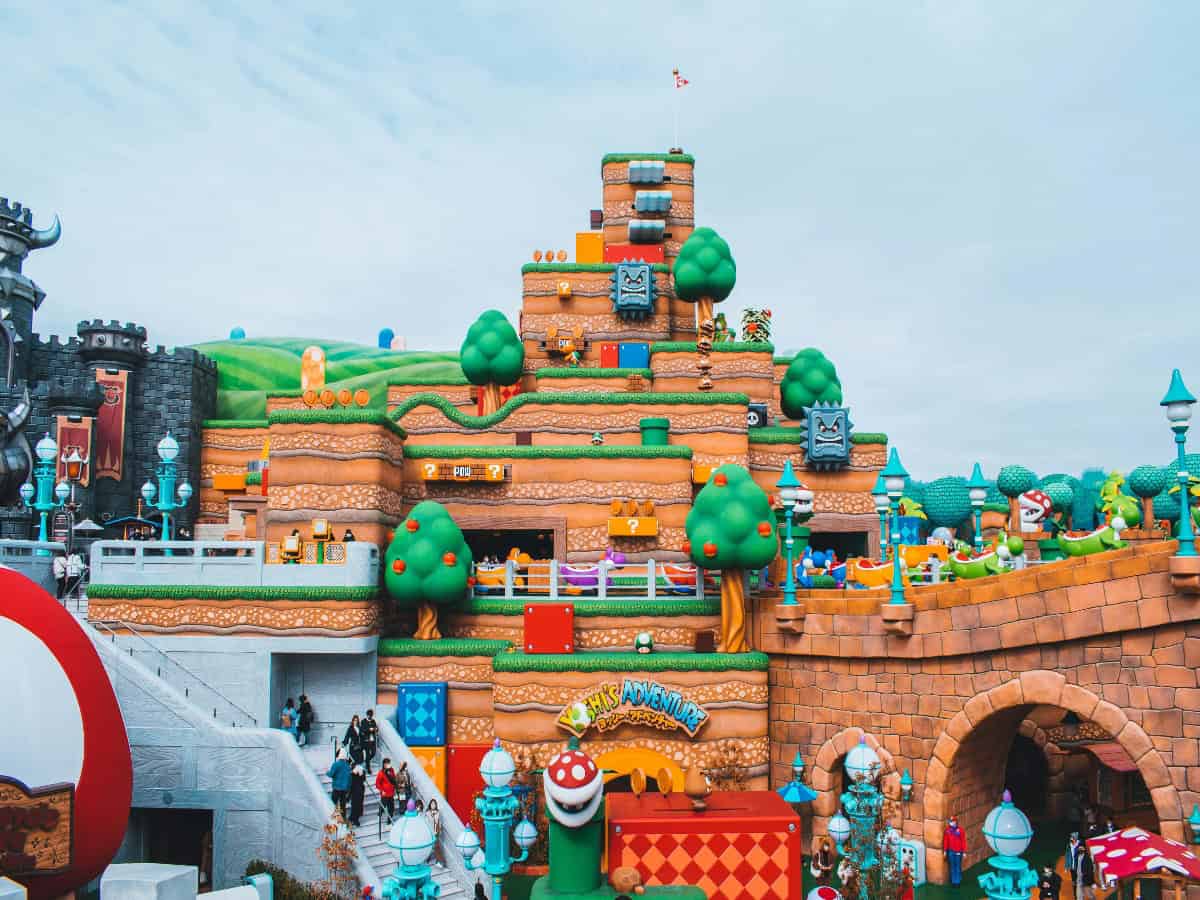
We think Universal Studios Osaka is one of the best theme parks in the world, and we want all our readers to know about it! Let your guard down and spend the day messing around and tapping into a younger, more carefree version of yourself in this giant adult playground.
Some of our favorite sections of Universal Studios Osaka are the Wizarding World of Harry Potter, where we got to try a mug of butter beer, and Super Nintendo World, which is without a doubt the park’s most famous area.
But there’s more to a day at Universal Studios Osaka than just the adrenaline-inducing roller coaster rides. The park is also packed with awesome restaurants and cafes selling colorful themed food that will get your imagination going. Our favorite is the Toadstool-shaped Cafe that sells Mario-themed burgers, Kinipio’s Cafe.
Make sure you’re ready for your time at Universal Studios Osaka by reading our The Ultimate Osaka 4 Day Itinerary. We go into everything you need to know about getting there, ticket types and the different prices, and what rides not to miss!
Don’t miss our four-day guide to Osaka! Everything you need to know before visiting one of Kansai’s more popular stops! Check out our post.
Check Out Our Osaka Guide
Kyoto: Discover Japan’s Ancient Temples And Immerse Yourself In Traditional Japanese Culture
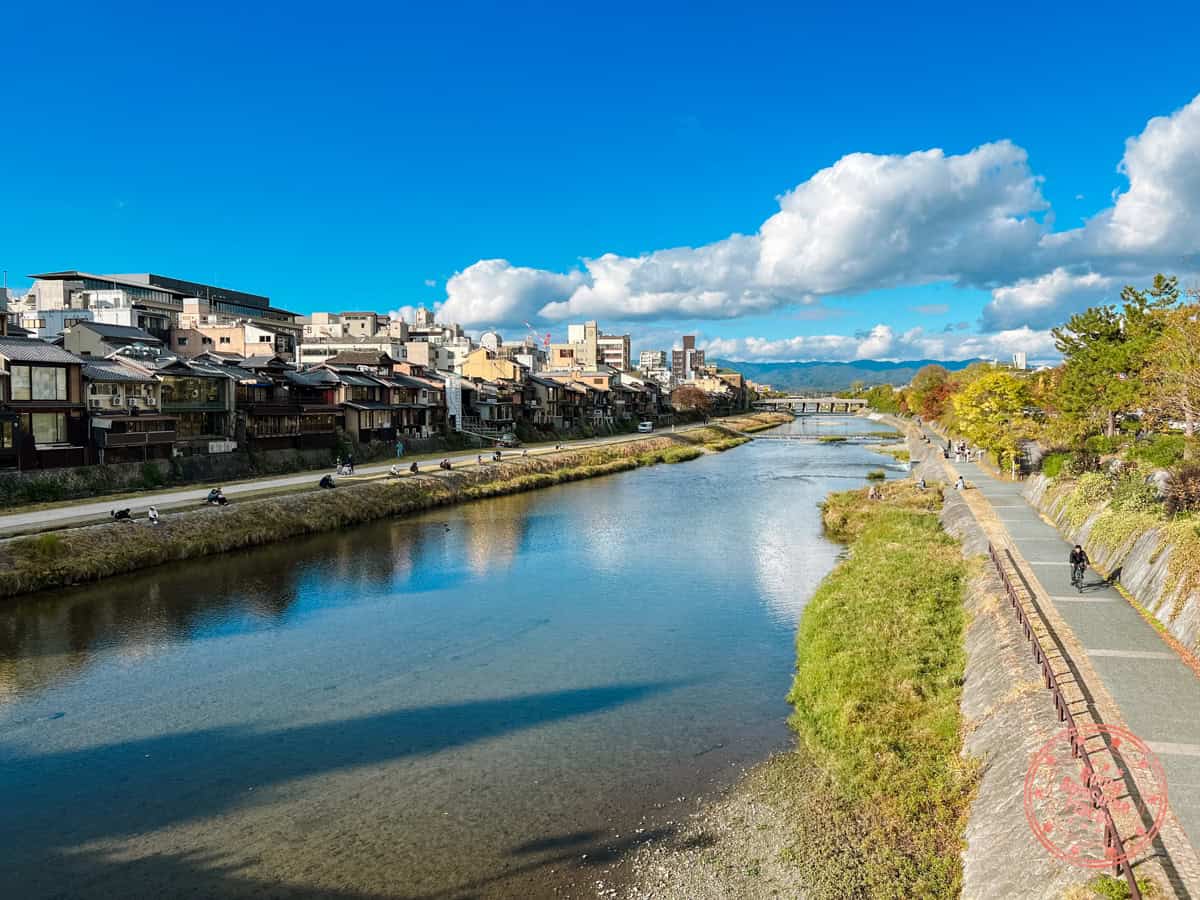
The former capital of Japan from 794 to 1868, Kyoto is quainter and cuter than other Japanese cities. Dotted with more historical temples than you could visit in a lifetime and home to the historical streets of Gion. It is the land of Geishas and tradition.
We’ve picked some of our favorite spots in the city to give you a taste of what Kyoto is like, but if you want to go deeper you should read our The Ultimate Kyoto 4 Day Itinerary.
Wander Through The Torii Gates At The Fushimi Inari Shrine

One of the city’s most notable temples, the Fushimi Inari Shrine isn’t as cute as some of the ones in the Gion neighborhood. But there is a reason so many travelers leave the historic district to visit it – the shrine’s network of red torii gate tunnels.
They’re a super popular spot for Instagram pics, so make sure you have your photography kit with you.
The tunnels start at the back of the temple and weave their way up the mountain behind the shrine. Each of the gates was donated by a business or person, which is pretty cool! It also means the tunnels, which are already made up of thousands of torii gates, just keep getting longer and longer.
At the start of the mountain path, there are two parallel rows of gates you can choose from. If you wander through the gates for about half an hour, you’ll arrive at the Yotsutsuji intersection which has great views over Kyoto.
Explore The Bamboo Tunnel Trails In The Arashiyama Bamboo Grove
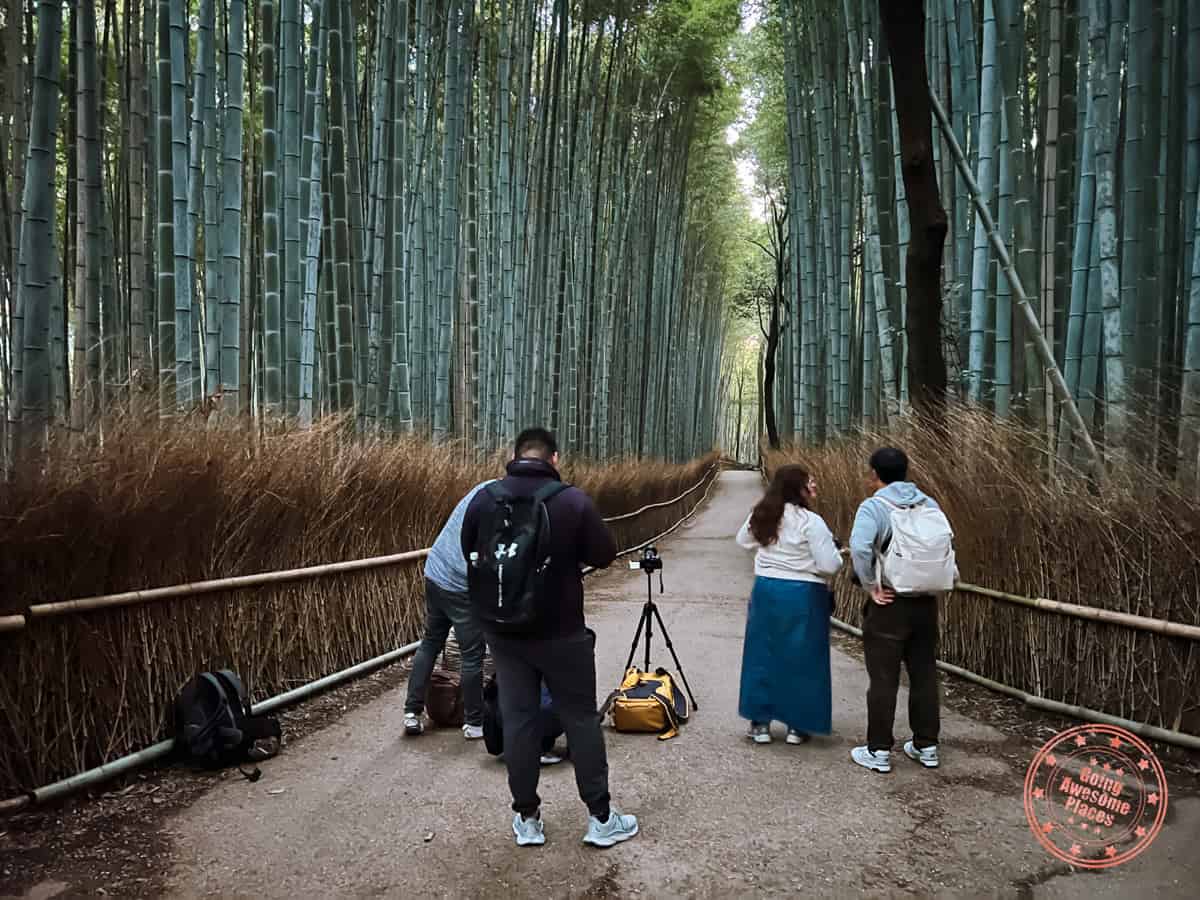
Who said Kyoto doesn’t have cool nature spots? The Arashiyama Bamboo Grove proves that even in a metropolitan area you can find pockets of wilderness. Tall bamboo shoots grow along the park’s network of trails, forming bamboo tunnels that make you feel immersed in nature.
If you follow the main trail, it’ll lead you to the Okochi-Sanso Villa. This is the house of a famous former actor and is now open to the public. The gardens are super cool and worth visiting, plus you can grab a cup of matcha tea and catch your breath at the tea house.
But the bamboo tunnels aren’t all the park has in store for its visitors. There’s also the epic Arashiyama Monkey Park! The wildlife sanctuary is home to families of Japanese Macaque monkeys that you can even feed from inside a feeding cage (it’s like a reversed zoo cage because you go in the cage and feed the monkeys that are on the outside).
Try Local Street Food At The Nishiki Market
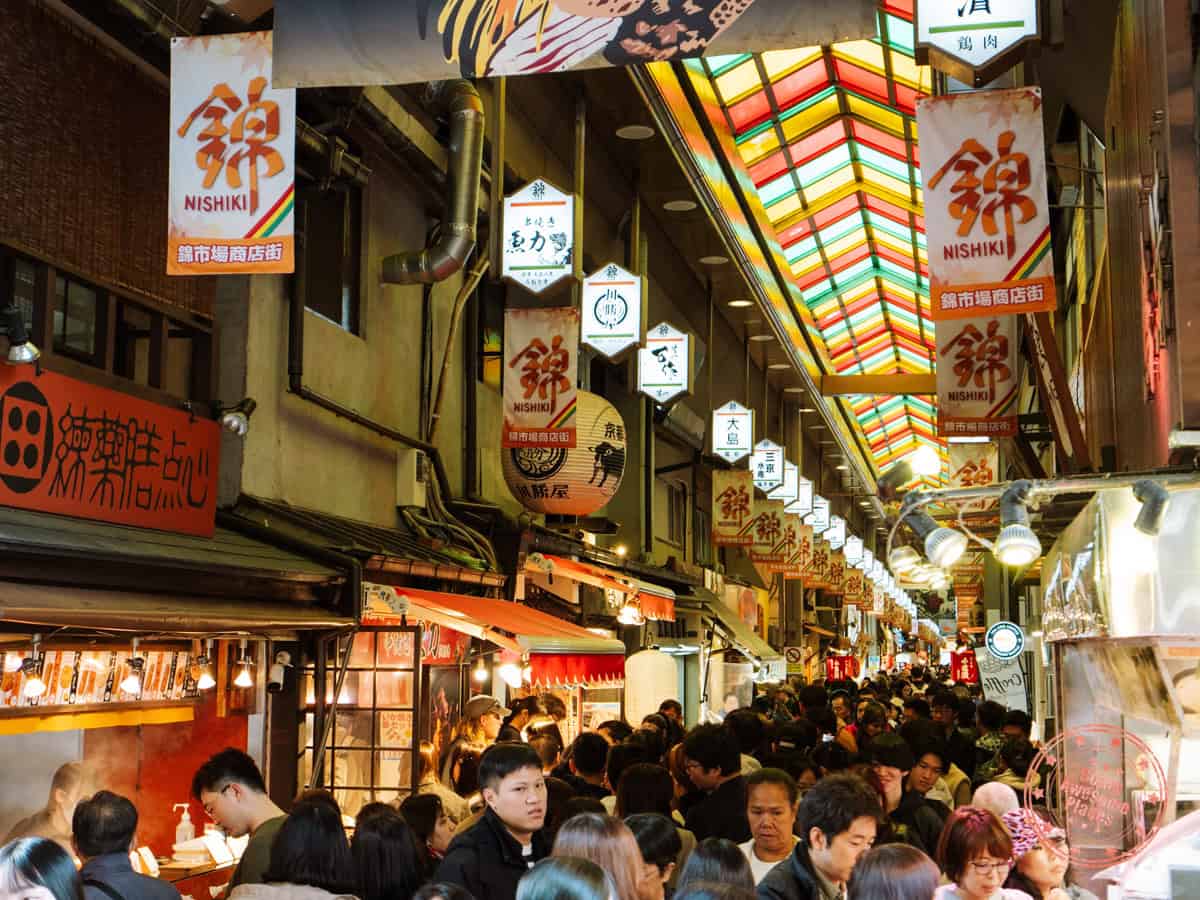
With over 100 shops and food stalls, this busy market is full of life. It stretches across five blocks and was endearingly nicknamed ‘Kyoto’s kitchen’ because of how many kitchen utensils and food stalls there are in the market.
We love the food markets in Japan and think they’re a great way of getting to know the local food culture and the best place to expose your taste buds to as many new flavours as possible!
Nishiki Market is particularly special as it’s been going since 1310. You’ll be blown away to hear that some of the stalls in the market have been run by the same family for centuries. Kimura Fresh Fish is one of our favorite stalls in the market, known for its sashimi skewers and sea urchin dishes.
Head To The City’s Most Picturesque Temple, The Yasaka Pagoda

The Hikan-ji Temple, known by most as the Yasaka Pagoda, is Kyoto’s most iconic temple. Nestled amongst the temple-packed cobblestone streets of the historical Higashiyama neighborhood, it stands out against the masses of shrines thanks to its breathtaking 46-meter-high pagoda.
Dating back to ancient times, the temple was first built in 589 and offers a glimpse into how Kyoto was in times gone by. If you wander into the pagoda, you can admire the intricate statues and fading paintings that decorate the structure’s walls from up close.
We don’t think a trip to Kyoto is complete without a visit to the Yasaka Pagoda!
Don’t miss our four-day itinerary to Kyoto! Everything you need to know before visiting one of Kansai’s more popular stops! Check out our post.
Check Out Our Kyoto Itinerary
Nara: Visit The Bowing Deer And Try Fresh Mochi

Nara is thought to be the ancient capital of Japan, making it even older than Kyoto. It’s not as popular as Osaka and Kyoto, but it’s still not a destination off the beaten track. Lots of travelers visit the city on a day trip from one of the other two major cities to see the bowing deer (which we’ll get to soon!).
We love Nara and think it’s totally worth adding to your Kansai region itinerary.
Visit The Infamous Bowing Deer Park

Roaming freely in the Nara Deer Park, there are a thousand bowing deer. Small and cute, the deer win over anyone passing through. They’re super tame as well, so they don’t mind getting pretty close to you.
If you’re up for it you can even feed the deer some shika senbei crackers. You can get them from the vendors dotted around the park, who know the best treats to entice the deer. These little deer are thought to be sacred and are considered messengers of the Gods in the Shinto religion.
We loved taking pictures with the deer, and thought it was such a unique experience, we even added it to our 12 Day Japan Itinerary – The Ultimate Trip.
Watch Mochi Being Made Then Try Some For Yourself

Another cool thing you can do in Nara is watch mochi being made at Nakatanidou. Famous for being the home of the fastest mochi-makers in town, locals and tourists gather outside the kitchen and watch the fresh mochi being made right before their eyes.
But don’t just watch – try some for yourself! The delicious mochi is filled with a sweet red bean taste that isn’t like anything you’ll find in the West.
Travel Beyond Kansai’s Three Major Cities

Everything beyond Kansai’s three major cities often gets overlooked. Overshadowed by the more famous temples of Kyoto, the bowing deer of Nara and the futuristic neighborhoods of Osaka, they don’t make it onto many travelers’ itineraries.
We want to change that! Check out these awesome nature destinations and smaller cities packed with character and then pick and choose which you want to visit.
Go On A Day Trip To Himeji Castle From The City Of Osaka
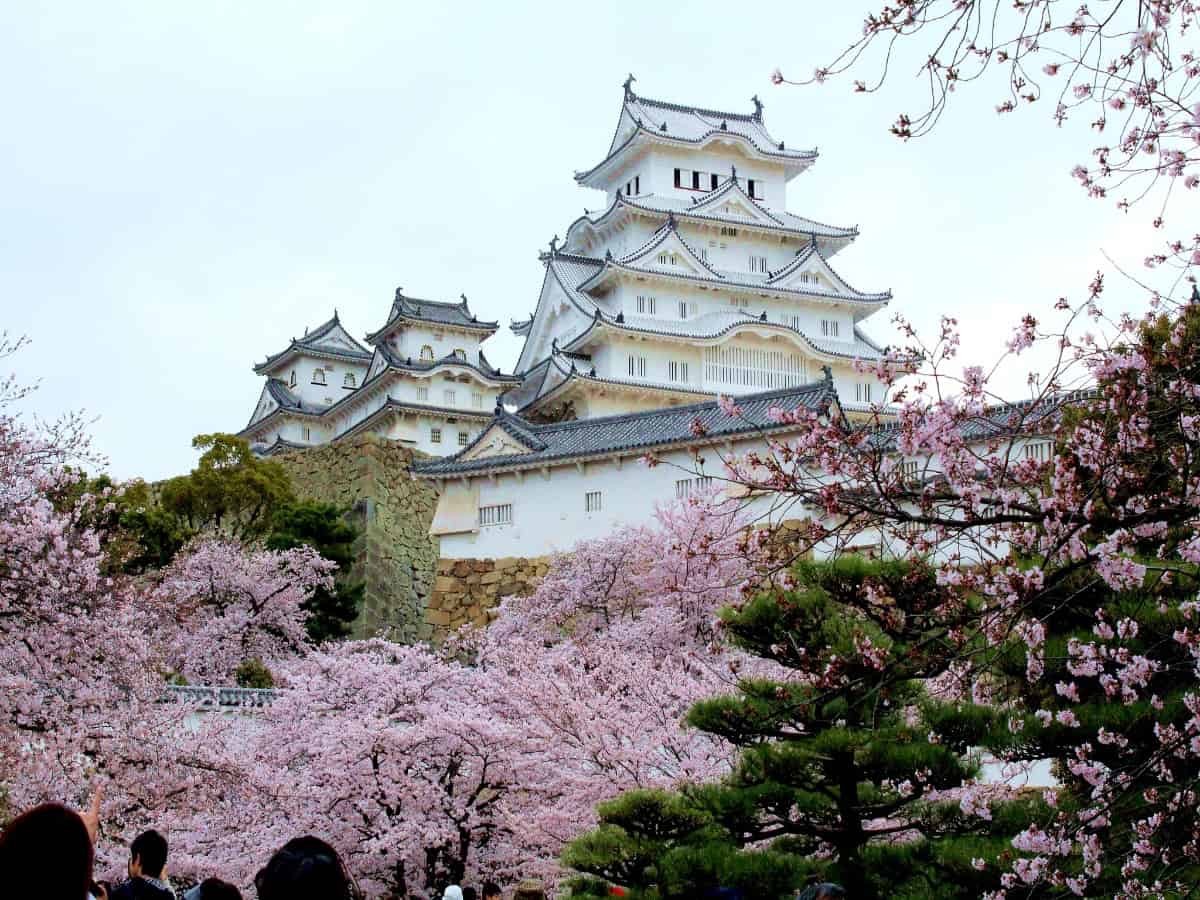
A dazzling castle in the Hyogo Prefecture, it was nicknamed the White Heron Castle because of its grand and elegant facade. This awesome castle complex was built between the 1400s and 1609. One of the coolest things about it is that it’s one of just 12 castles in Japan that weren’t burnt down, destroyed, or bombed in World War II.
Because of that, it’s a UNESCO World Heritage Site!
It’s a great place to visit during the Sakura season too, as there are more than 1,000 cherry blossom trees on the castle grounds. The views of the castle framed by the surrounding pink cherry trees are beautiful and worth traveling for. You’ll also stumble across the Himeji Castle Cherry Blossom Viewing Festival where you can watch koto harp performances and rhythmic taiko drum shows.
Even if you can’t make it during the Sakura season, the gardens in the castle complex are worth visiting. The Senhime Botan Garden and Nishinomaru Garden are particularly cute.
Find The Best Sakura Spots Of Japan
If you plan on visiting Japan during Sakura season, this is a must read! The Ultimate Guide To Cherry Blossoms In Japan: Best Places & Peak Viewing Times.
The Ultimate Guide To Cherry Blossoms In Japan
Visit Lake Biwa In The Shiga Prefecture

Lake Biwa is Japan’s largest freshwater lake. Amazingly, it takes up a third of the Shiga Prefecture! From the shore, it stretches further than the eye can see and is framed by stunning mountain scenery.
Few people know about this epic lake, so you won’t have to share its shoreline with massive crowds either (which is always a plus!). You could spend days exploring the shores of Lake Biwa, but if you’re short on time, here are some ideas of what to see.
Catch a cruise to Chikubu Island. The home of the Hogonji Temple, this little island is quiet and sleepy, a great place to aimlessly wander around, getting lost in daydreams.
Another option is to head to the Mangestuji Ukimido, or Floating Hall. We think this is the most iconic landmark around the lake, and a super cool spot for any photography fanatics! The small wooden temple is built at the end of the jetty and looks like it’s floating on the lake’s surface.
Spend A Day Chilling In Wakayama’s Epic Onsens

Wakayama is one of Kansai’s seven prefectures. Famously one of the best hot spring areas south of Osaka, it’s home to some of the most luxurious onsens in Japan. Surrounded by nature and hidden amongst the dense forest scenery, it’s a hotspot for locals and travelers from all over the world who are in need of some TLC.
Because Japan has super high levels of volcanic activity, there are thousands of hot springs dotted around the country. They’ve become a very important part of Japanese culture, and lots of people believe the warm, mineral-rich waters have healing properties.
One of the most famous hot springs in Wakayama is Yunomine, which was founded nearly 1800 years ago and is on the UNESCO World Heritage List. If you’re taking your partner, you can book the intimate Tsubo-yu onsen which can only fit two people, perfect for a romantic day together.
Fancy getting out into the countryside? Nature lovers will love the onsens that are dotted in the surrounding landscape, you can check out all the options on the Wakayama Prefecture’s handy guide to onsens in the area. One of our personal favorites is the Saki-no-Yu onsen which has open air baths that look over the Pacific Ocean.
If you’re an adventurous soul and you’re looking for the most extreme hot spring experience, then check out Katsuura Onsen. It’s an open-air bath that is inside a giant natural cave, Bokido Cave. The bath faces the Pacific Ocean and has views of the beaches and shore below. Let the gentle sound of the waves ease your mind as you soak your worries away!
Visit The Staggering Nachi Waterfall

Ready to see Japan’s tallest single-tier waterfall? With a 133-meter drop, the Nachi Waterfall is an impressive sight. The water plummets down the cliffside at an alarming rate, roaring as it crashes onto the rocks below. Incredibly, one ton of water falls down the cliffs every second!
The fall is on the site of the Kumano Nachi Taisha, a pretty temple complex that is both Buddhist and Shinto. Reflective of the integration of these two religions in the area, the complex has a Buddhist temple and a Shinto shrine as well as a picturesque three-story pagoda.
If you walk towards the pagoda, you can capture the buildings and waterfall in the same picture, an impressive shot you can show off to everyone back home!
Go On A Day Trip To Kobe

Built along Osaka Bay, Kobe is easy to reach from Osaka and Kyoto. There’s not as much to do as in Kansai’s three major cities, so we don’t recommend using it as your base when you’re traveling. But it’s definitely worth visiting on a day trip!
It is the capital of the Hyogo Prefecture and an important port city that was built between the sea and the Rokko mountain range. Most people know about the city because of its mouth-watering Kobe beef. This local brand of Wagyu cattle is characterized by a marbled and tender meat that is rich and fatty. Some of the best places to try Kobe beef are Kobe Beef Steak Restaurant Royal Mouriya and Steak Aoyama.
Since you’ll already be in the city it’s also worth visiting the Ikuta Jinja Shrine. It’s a 3rd-century Shinto shrine and is amongst the oldest in the country. The traditional carvings on the facade and vibrant red and gold tones are super impressive, plus there is a quiet patch of forest just behind the shrine where you can take a moment away from the city noise.
The last thing we recommend doing on your day trip to Kobe is taking the cable car to the top of Mt. Rokko. The traditional cable car runs from Rokko Cable Shimo Station up the mountain to the Rokko Sanjo Station. There are epic views over the city and port from the top, and in the autumn the mountainside comes alive in autumnal colors. You can find out about the schedule and price of the journey on their official website.
Activities We Recommend You Book
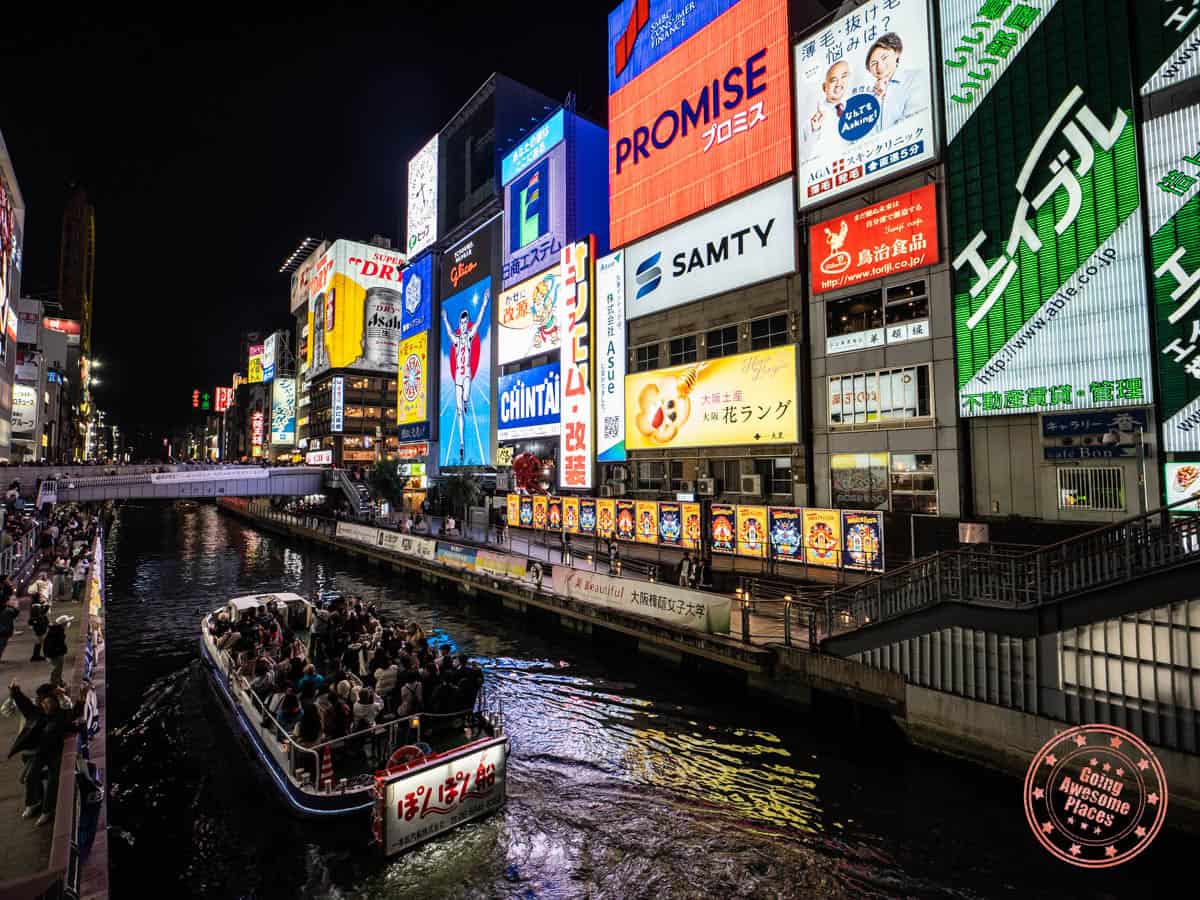
Make sure you don’t leave it too late to join the coolest tours in Kansai. It can put a real damper on your trip, having to miss out on epic experiences because you left it too late. The Kansai region is a popular travel destination, so things get booked up quickly. Beat other travelers to it and book onto these awesome tours:
- Avoid getting FOMO and book this small boat tour along the Umezu River in Dotonbori before it sells out! There’s nothing quite as cool as seeing Dotonbori’s flashing neon billboards and chaotic streets from the water! You’ll be especially glad you booked this more intimate tour when you see the jam-packed, yellow Tonbori River Cruise boats that tourists tend to opt for.
- Are you a foodie who loves putting their taste buds to the test and trying wacky dishes? Then book this tour of Nishiki Market. Guided by a local expert, you’ll get to try all the most peculiar dishes from the best food stalls.
- Hoping to leave the research to someone else? Then book this fun tour of the Arashiyama Bamboo Grove and Monkey Park. The tour also takes you to Tenryuji Temple and into the surrounding shopping areas. It’s a great way to meet other travelers and learn about the area.
- Join a traditional tea ceremony in Kyoto and learn about this age-old tradition. We did this one and loved it because we got to dress up in kimonos!
- See Himeji Castle in all its glory on this informative walking tour. Explore the castle grounds and learn about the castle’s epic history at the same time.
- Get out of the city and explore the coolest attractions around Lake Biwa on this unforgettable tour. Visit the gardens of a Zen temple, take pictures of the floating Ukimido temple, and ride Japan’s fastest ropeway to the top of a mountain with panoramic views of Lake Biwa all around you.
- This fantastic Nachi Waterfall tour from Osaka or Kyoto is perfect if you don’t want to rent a car but you still want to explore the Wakayama Prefecture. It’s a private tour for up to 6 people, and even though it’s on the more expensive side, we think it’s worth the money. You’ll have a guide to yourselves, so you’ll get a much more intimate tour experience than usual. On this day trip, you’ll see Mount Koya, the Okunoin Temple, and Nachi Falls.
Dive Deeper Into The Kansai Region

Wondering what more there is to know about Kansai? We love the Kansai region so much that we have a whole series of articles about it. Don’t let your questions keep you up at night, dive deeper into the region’s major cities and read our area-specific articles that will make planning your trip a breeze!
- Ready to book your flights to Osaka but wondering what there is to do once you arrive? Then check out our Ultimate Osaka 4 Day Itinerary. With a day-by-day breakdown that includes everything from the best hotel options to where to eat each meal. It covers all the city’s most famous attractions and best highlights for anyone who doesn’t have all the time in the world to explore this vast city. Leave the logistics to us and spend your time getting hyped for your next trip instead!
- As any foodies will know, the flavors of a region are an important part of any trip. Wondering what to eat whilst you’re in Osaka and stuck for ideas? Check out our Guide To The Must-Try Food In Osaka to get your taste buds tingling! We’ve included loads of the city’s quirkiest dishes and Japanese classics you’ll never tire of.
- If you’re going to Japan for the first time, then our 10 Day Japan Itinerary For First Timers is perfect for you! You’ll visit some of Kansai’s most iconic cities, Osaka and Kyoto, as well as spend time in Tokyo in the Kansai region. If you’re looking for a well-rounded itinerary that will give you a taste of what Japan has to offer, then it’s a no-brainer. Got a few more days in the country? Then check out our 12 Day Japan Itinerary instead!
- Don’t miss our awesome Ultimate Kyoto 4 Day Itinerary that includes all the top attractions in the city as well as a day-by-day itinerary you can follow. Wondering which hotel to book? Or what temples to prioritize visiting? Or what restaurants to eat at? It’s all in there.
- Have you already booked your flights and you’re racking your brain trying to decide where to stay? Let us help you find a hotel! We’ve been to the city enough times to know the different neighborhoods and best hotels, so we gathered all our wisdom in one place in our Where To Stay In Kyoto guide.
- Not sure when to visit Japan? Check out our When Is The Best Time To Go To Kyoto guide to get an idea of when the city’s coolest festivals are, what the temperatures are like in each season, and more.
- The Art Of Trip Planning – Although this article isn’t specifically about Kansai, it’s a useful guide for any backpacking newbies who aren’t sure where to start. It can be daunting planning your first (or hundredth) trip, but with this guide, you’ll be an expert in no time!
General Travel Tips

When is the best time to go to Kansai:
Because Japan is made up of different islands which each have slightly different locations and they take up a fair length from north to south, it’s important to be aware of the unique temperatures and weather conditions of each region.
The Kansai region has four distinct seasons but doesn’t get as cold as more northern parts of Japan like Hokkaido. Like many parts of the country, it’s most popular during the spring and autumn. From late March to mid-April Kansai experiences its Sakura season. The region’s city parks are brought to life by a sea of pink petals.
Meanwhile, in autumn, the vivid fall colors brighten up the region’s mountains and nature spots. The temperatures are pretty mild in spring and autumn too, so it’s no wonder so many travelers visit in these seasons. It is worth considering avoiding coming in October, which is the rainiest month of the year.
Summer gets pretty hot in Japan, so long days of sightseeing can be pretty tiring. But, if you love the heat, then you’ll get the perk of off-season hotel and flight prices. We don’t recommend coming to Kansai in winter. There aren’t many winter-specific things to do in the region, so it’s not worth battling the cold.
What you shouldn’t miss in Kansai:
There’s loads to do in Kansai, which is great news if you have loads of annual leave saved up and you can go on a longer trip. But for those of you struggling to get more time off, it can be dizzying deciding what to prioritize.
Luckily, Osaka, Nara, and Kyoto are all very close together. Even if you only have a long weekend in Japan, you can probably hit two of Kansai’s major cities. Remember not to overdo it though, spending your holiday fatigued is no fun either.
Looking to discover ancient temples and learn about Japan’s oldest traditions? Then head to Kyoto. Visit the Fushimi Inari Shrine, wander through the Arashiyama Bamboo Grove, and visit the Yasaka Pagoda.
More of a fan of futuristic neighborhoods, roller coasters, and lively bars? Then Osaka is the city for you. Go on a river cruise through the Dotonbori neighborhood, take a selfie with the Glico Man, and go wild at Universal Studios Osaka.
Anyone who would rather spend their holiday away from the bustling city streets should visit the shores of Lake Biwa, stand below the monumental Nachi Waterfall, and spend a day chilling in the hot springs in Wakayama.
Top tips for traveling in Kansai:
- Get an Express Pass for Universal Studios Osaka – You won’t be the only travelers who have added Universal Studios to their itinerary. Avoid spending precious time in queues when you could be whizzing through the air on a roller coaster by paying a bit extra for an Express Pass.
- Don’t leave without trying these dishes at Nishiki Market – Like all of Japan’s food markets, there are some dishes that are particular to the Nishiki Market. One of the most bizarre, that will put even the most adventurous foodies to the test, is tako-tamago. The marinated baby octopus is a local delicacy. The sashimi is also extra tasty at Nishiki!
- Get a JR Pass for your trip to the Kansai region – Kansai’s three major cities, and lots of the attractions further afield, are easy to travel between by train. The region has a great network of trains which makes it really easy to hit a few cities in one trip. Having a JR Pass will save you a fair few bucks on your transport costs. Grab your JR Pass here.
- Top tip if you’re planning a trip to Kyoto – The best time to go to Kyoto is during the cherry blossom season in early April. If you’ve already seen the Sakura season on other trips, find out more about the city’s other festivals (like the Daimon-ji Fire Festival in August and the Gion Matsuri Festival in July) and notable dates in our When Is The Best Time To Go To Kyoto guide.
- Make sure you do this ahead of your trip – Check out our 12 Of The Best Apps For Japan Travel to find out what other apps you should download before setting off on your next epic trip! We’ve included handy language apps that will help you overcome language barriers, apps we use for navigating, and so much more!
How to get around Kansai:
A major perk of traveling to Japan over other destinations is how great the public transport is. There’s a huge network of trains across the country, and each city has its own metro, train lines, and buses. Public transport is super reliable too, so unless you’re venturing into more remote areas in the Kansai region you can easily travel without a car.
To get around Kansai’s major cities you’ll need an IC Card. There are a few on the market but our top pick is the Suica Card. You can use it on all the buses and subways in the region’s cities and even on trains further afield!
There are day-ticket options where you just pay for unlimited transport on that day, but we don’t recommend them because they tend to work out more expensive in the long run (even if you’re only there for a weekend).
Google Maps is a great app to use for navigating your way around. It can be pretty unreliable in other countries, but in Japan, it has up-to-date information about transport schedules and knows if there are any major disruptions you should be aware of. We’ve used it every time we’ve visited and never had any problems.
If you’ve stayed out later than you expected, drinking sake, and you need a quick way home, you can use familiar apps like Uber and DiDi in Kansai’s cities. There’s also the taxi app GO. Even though Uber tends to be cheaper than taxis in Europe and other places, that isn’t always the case in Japan. If you want to make sure you aren’t paying more than a regular taxi when you use the Uber app then select the Uber Taxi option!
Common travel mistakes:
- Is it Kinki or Kansai? Travelers often get confused by the Kinki vs Kansai question. The reality is Kinki and Kansai are the same region, it just has two popular names that are used interchangeably, with Kansai being the more common use.
- Get up early to visit the Arashiyama Bamboo Grove – It’s always tempting to have lie-ins every day when you’re on holiday. You work hard, and you probably have some sleep to catch up on. But if you’re going to the Arashiyama Bamboo Grove, you really should wake up early and get there as soon as possible. The paths through the bamboo tunnels get ridiculously busy later in the day.
- Make sure you check out the official Wakayama onsen guide – This official website run by the prefecture’s government has information about all the best onsens in the area. Because there are so many it’s a super handy place to start your search as it’ll save you loads of time.
- Book a table at a restaurant in Kobe in advance – Kobe beef is a sought-after dish that brings thousands of travelers to the city of Kobe. Make sure you don’t miss out by booking a table at one of the city’s best restaurants well in advance.
Packing Guide
A visit to Kansai will mostly involve being in the city, with a few trips further afield into the surrounding nature. Here is a breakdown of all the things you should bring on your trip:
- Comfortable shoes: Even if you’re just in the region’s three major cities, sightseeing always involves a lot of walking, so pack your comfiest trainers or even some lightweight hiking boots.
- Pack your clothes according to the season: Japan has well-defined seasons, so make sure you bring extra layers like a hat, gloves, and a winter coat if you’re visiting in the winter. In the spring and summer, you can get away with bringing less luggage.
- Bring a lightweight raincoat: Remember that October is the rainiest month of the year in Japan, but the occasional rainy day can catch you by surprise in any month.
- Bring hand sanitizer: It’s not unusual for there to be no soap in public and restaurant toilets in Japan.
- Bring your best camera: Capture your trip to Kansai forever! You might want to consider bringing other accessories like selfie sticks and camera hood lenses too.
- Remember to pack a travel adapter: You’ll need a two-pronged Type A for Japan, so check your plugs to see if you need to get an adapter ahead of your trip.
- Get some Japanese Yen ready before your trip: It’s always a good idea to pack some cash in the local currency before your trip, in case you need cash to pay for your transport from the airport, or you find yourself in a sticky situation.
- Check ahead of time that you can use your bank card to take out Japanese Yen whilst you’re abroad without being charged hefty fees! If not, plan ahead and bring all the travel money you think you’ll need. In our 10-day Japan itinerary, we estimated it costs about $147 per person per day to travel in Japan.
- Check if you need a Visa ahead of your trip! Most countries don’t need a Visa for a short holiday in Japan, but make sure you check the unique requirements for your country, so you don’t run into any unexpected problems. You can find out more on the Ministry of Foreign Affairs of Japan website.
Let Kansai’s Cities Sweep You Off Your Feet, Then Recover In Wakayama’s Gorgeous Hot Springs
If you’re planning a trip to Japan, then our ultimate guide to Kansai Japan is a great way to get inspired! Bursting with contrasts — from Kyoto’s tranquil historical districts dotted with ancient shrines to Osaka’s neon streets and Wakayama’s remote hot springs.
We’ve covered everything, so you don’t have to do any of the hard work. We’ve found the best hotels, uncovered hidden gems, scouted out the best food spots, and included day trips to places like Himeji Castle and Lake Biwa.
Whether you’re soaking in a mountain onsen, eating mochi in Nara, or cruising through Dotonbori, there’s something for every kind of traveler. Wherever you decide to go, your trip to Kansai is sure to be packed with culture, nature, history, and a whole lot of fun!
Kansai Frequently Asked Questions
Kansai is known for being the home of Kyoto, which has loads of ancient temples and historical cobblestone streets that will make you feel like you’ve stepped back in time. It’s also where Osaka is, a city that offers a deep dive into Japan’s futuristic neighborhoods and wild nightlife.
Not far from Osaka and Kyoto, you’ll find the bowing deer that call Nara home, as well as gorgeous hot spring resorts tucked into the natural landscape in Wakayama. It’s also the home of the country’s tallest single-tiered waterfall, Nachi Waterfall.
Travelers often get confused about this, but yes – Kinki and Kansai are the same region. There’s even a third name that can be used for the region, Kinai. Each name was popularized in a different period of history, but it’s not something you need to worry about, as they all refer to the same geographical region!
Even though it’s the capital, I wouldn’t say Tokyo is necessarily better. Tokyo is a super unique city that is packed with sightseeing attractions and oozes modern Japanese culture.
But Osaka has a lot of neighborhoods that are similar to the ones in Tokyo. On top of that, one of the things that makes Osaka so cool is how close it is to other popular cities. Kyoto and Nara are super easy to reach by train from Osaka, so you can enjoy three cities in one trip!
Kansai is a pretty popular region in Japan that’s definitely on the usual tourist trail. How much you spend will really depend on what kind of accommodation you go for, how much of the region you want to see, and how many tours you decide to join whilst you’re there.
It’s hard to say how much you will spend exactly, but to give you a rough idea, in our 10 Day Japan Itinerary For First Timers, when we costed out our trip to Japan and averaged $147 per person, per day. We found that our biggest cost. You could definitely eat cheaper (especially if you got an apartment and cooked your own meals some days.
Japan Trip Planning Essentials And Discounts
If you’re in the middle of booking your trip to Japan, here are the most important places you need to go to book:
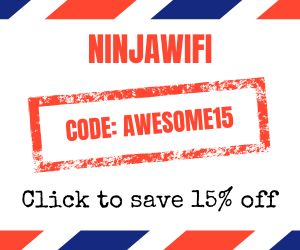
- JR Pass – The two most reliable places we always check are JRailPass and JRPass. If you are taking long distance Shinkansen across multiple region, get the full JR Pass. If you’re focusing on one specific area, you only need a JR regional pass. The official booking platform is Smart-Ex.
- Shinkansen – The JR Pass prices have gone up and for many of you, it’ll make more sense to book tickets individually. The secret is that when you buy your Shinkansen tickets through Klook offers special vouchers for Don Quijote and BIC when booking. Their tickets are super easy to redeem as well. Right now, use code SKS10OFF to save $10 USD off.
- Hotels/Ryokans – In Japan, the best website for accommodations, hands down is Agoda. When we’ve compared them against Booking, Agoda consistently came out cheaper.
- Tours – While Viator and GetYourGuide are our go-to’s, Klook and KKDay are much popular in Asia so it’s always worth comparing across all of them to make sure you get the best price. With Klook, use code GOINGAWESOMEPLACES to save up to 10% on your first booking.
- Pocket Wifi – While we do love eSIMs, having a pocket wifi is great for sharing data with a large group. The most popular is NinjaWifi which is easy to pick up at the airport. Use code AWESOME15 to save 15% (automatically applied). Alternatives are offered by JRPass and JRailPass but they aren’t as cheap. For a more global solution, consider Solis and PokeFi.
- eSIM – The best one is Airalo. Save money by getting the Japan region eSIM and use referral code WILLIA9500 to get $3 USD credit on your first purchase. From now to Feb 29, the 10GB package is half price as well! Ubigi is another one that we’ve had success with where they uniquely offer 5G coverage. Use code AWESOME10 to save 10% on your first order.
- Car Rental – Big companies like Budget, Avis, and Enterprise operate in Japan but they’re usually the most expensive. The best companies are the local Japanese ones such as Toyota Rentacar, Nippon Rentacar, Orix Rentacar, Nissan Rentacar, and Times Car Rental. To make things easier, use Rentalcars and Klook to compare prices all in one place. Don’t forget, you need an IDP to drive in Japan so get one before you leave your home country.
- Learn Japanese – It helps to know even a bit of the language before you go. Start your learning with Rosetta Stone Japanese.
- Cash or credit – Cash is still very important to have in Japan but when you use credit cards, make sure you’re not getting charged those extra exchange rate fees. The best card right now is the Wise Multi-Currency Card which is actually a debit card where you can convert at favorable rates beforehand. This cuts out any sneaky transaction fees.
- Travel Insurance – Make sure you’re covered in case something happens. Get quotes from HeyMondo where booking through our link gets you 15% off automatically and if you’re from Canada, get quotes from RATESDOTCA.
- Shopping – Discovering Don Quijote is a quintessential part of the Japan experience. The secret for tax-free shopping is that they have a coupon that can help you save 10% off + additional 5% off if you spend ¥10,000 or more.


